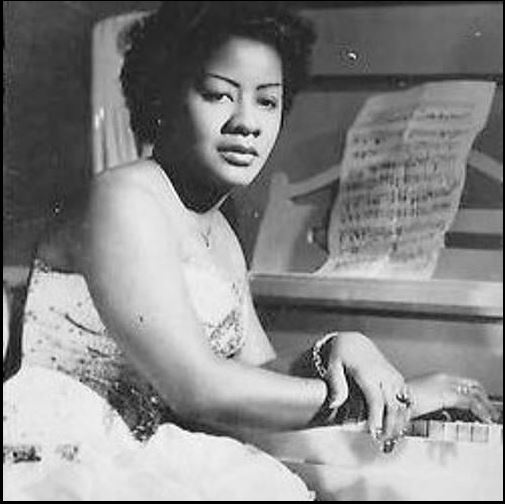FROM CUBAN MUSIC: Gardenias that Don’t Wither
especiales

Like great love stories that never die, the bolero Dos gardenias, by Isolina Carrillo, continues in the repertoire of performers of yesterday and today. It was released in 1945 by the opera singer Guillermo Arronte on the RHC Cadena Azul radio, although it would be the Puerto Rican Daniel Santos who made it an international hit. Not only did it reached the public, but new generations have soundtracked their romances with this heartfelt melody.
Local and foreign performers added the song to their repertoire. It was recorded by Cubans Antonio Machín, Rita Montaner, Fernando Álvarez, Elena Burke, Roberto Sánchez, Omara Portuondo, among others. Ibrahim Ferrer gave an excellent interpretation of this work on the award-winning album Buenavista Social Club. In other latitudes it was heard in the voices of María Luisa Landín, Pedro Vargas, Fernando Fernández, Eva Garza, Leo Marini, Diango, Diego El Cigala's interpretation is very popular.
What motivated its creation? Was it born from a personal experience or perhaps from a cruel disappointment? Isolina herself, throughout her life, gave different versions in her interviews.
Isolina Carrillo

The author once said that the song came to her when a student gave her gardenias of impeccable whiteness. It has also been commented that it’s due to an argument with a Colombian student, who was celebrating a party to which he did not invite her teacher because she was black.
She had previously presented other unforgettable songs: Como yo jamás, Miedo de ti, Cuando menos lo pienses, Increíble, Sed de ti, Que mal te portas, Rumor de vida, Chachachá sentimental, Castillo de sueños.
Isolina's father, who was a veteran of the War of Independence and a tram driver, played the guitar, bandurria and percussion; the children also made music. With them and Isolina herself, Crispín Carrillo directed a brass band that performed in cinemas.
Born in Havana, on December 9, 1907, she studied with the guitarist and composer Graciano Gómez and at the Municipal Academy (today Amadeo Roldán Conservatory) where she graduated. In addition, she received singing classes from Piedad de Armas and from maestro Juan Manuel Elósegui.
Although she had a solid training as a concert performer, she drifted towards popular genres. Trovadoras del Cayo she called her women septet, the second one there was in Cuba, and where instead of the piano she played the trumpet, learned from Lázaro Herrera, a musician in Ignacio Piñeiro's group.
In 1934, Isolina not only performed as a pianist but her voice was heard in the Trío Guyún, formed by the guitarist of that name and Marcelino Guerra, Rapindey. The young woman had begun to accompany remarkable performers like Rita Montaner and she continued on the CMQ station, in the amateur radio program La Corte Suprema del Arte.
The composer is responsible for the creation of the typical giant Cadena Azul Orchestra and the first peasant ensemble on Cuban radio.
She was a member of the Siboney Ensemble and with the quartet of named, the first vocal group in the country. With her husband Guillermo Arronte, she formed another one that toured the entire country. In Mexico they shot films like Rumba Caliente and La segunda mujer. For Dos Gardenias, Isolina was awarded the coveted Ariel Prize in Mexico. André Kostelanetz requested a piece of hers for his orchestra and she did so with teh bolero song Miedo de ti.
Her extensive knowledge contributed to the formation of several acclaimed singers in the artistic world. Isolina's heart gave up forever on February 21, 1996.
Translated by Amilkal Labañino / CubaSí Translation Staff














Add new comment